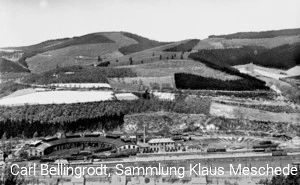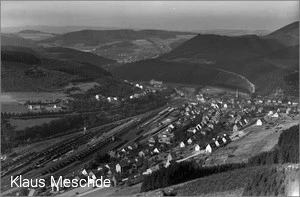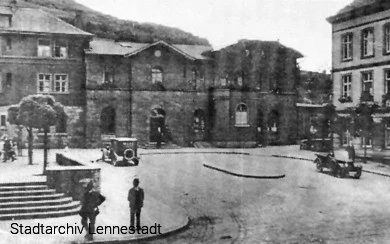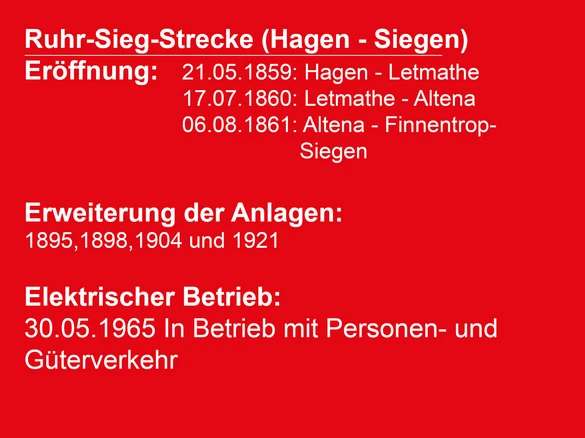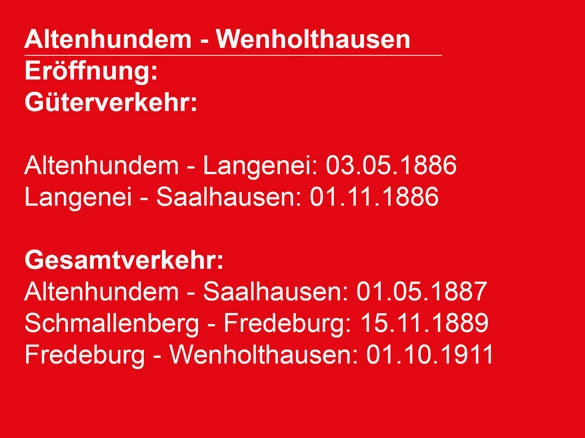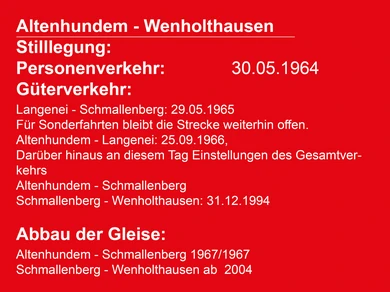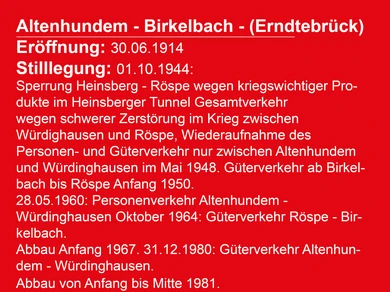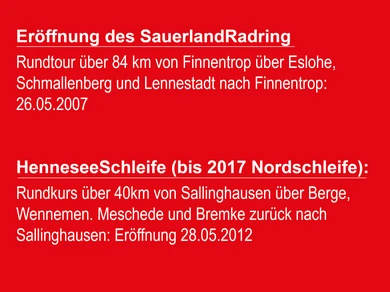Der Bahnhof Altenhundem
Die Ortschaft Altenhundem (heute ein Teil von Lennestadt) ist mit der Eisenbahn groß geworden, Bahn und Region bildeten hier jahrzehntelang eine Einheit. Ab 1861 war der durchgehende Verkehr zwischen den Industriegebieten an der Ruhr und Sieg möglich. Die Errichtung einer Lokstation erfolgte bereits beim Bau der Strecke 1861. Diese erlangte mit der Zunahme des Verkehrs auf der Ruhr-Sieg-Strecke eminente Bedeutung, nicht zuletzt aufgrund der südlichen Rampe Richtung Welschen Ennest. Erste große Veränderungen erfolgten zur Jahrhundertwende, als man einen Wasserturm baute (1895) und der Lokschuppentrakt erweitert wurde (1898 und 1904). Für die nächsten Jahrzehnte war die hiesige Eisenbahnstrecke eine wichtige Güter-Rollbahn (vor allem Kohle aus dem Ruhrgebiet).
Anno 1921 wurde kann der neue Halbrundschuppen errichtet. Im Güterbetrieb waren vielfach die preußischen G 12 (58.10) zu finden. Nachdem die Serienlieferungen der schweren 44er einsetzten (ab 1937), wurde diese Maschine in den nächsten Jahren eigentlich das Synonym für das Bahnbetriebswerk Altenhundem. Es gehörte zu den wichtigsten Bahnbetriebs-werken der in Wuppertal ansässigen Direktion und war gleichzeitig der größte Arbeitgeber weit und breit. Erst mit der Elektrifizierung der Strecke endete diese Zeit im Jahr 1965.
Ein Bahnknotenpunkt entstand durch die beiden Nebenbahnen, die durch das obere Lennetal bis nach Fredeburg (1886, ab 1911 durchgehend bis Wennemen ins Ruhrtal) und nach Birkelbach ins Wittgensteiner Land an die Rothaarbahn (1914) führten. Auch diese Bahnherrlichkeit endete weitestgehend in den 1960er-Jahren.
Bild 1: Das Bahnbetriebswerk in 1951 (Foto: Carl Bellingrodt, Sammlung Klaus Meschede)
Bild 2: Die ausgedehnten Gleisanlage des Bahnhofes Altenhundem Ende der1950er-Jahre (Foto: Sammlung Klaus Meschede)
Bild 3: DerBahnhofsvorplatz in den 1930-Jahren (Foto: Stadtarchiv Lennestadt)
